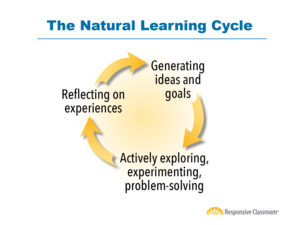
After multiple delays, New York City schools started this school year in late September with both hybrid and remote instruction. I began the school year with the same goal I have every year: to build relationships. My first opportunity came during a 10-minute Zoom call where my co-teacher and I met each of our kindergarteners and their grown-ups. We introduced ourselves and got to know our new students by asking them what name they would like to be called at school, what they did during the summer, and if they had questions for us.
Asking students what they prefer to be called at school serves many purposes. It ensures that I label students’ table caddies and cubbies accurately, provide students with a sense of belonging and significance in our class community, and, perhaps most importantly, is the first time I offer students a choice.

Research shows that when teachers give students even simple choices, their motivation increases. Laying the foundation for choice early in the school year sets the standard for the level of engagement students can expect (as the year progresses, I give students more developmentally appropriate choices). Some choices students can make during the first few weeks of school include:

As educators, many of us provide our students with similar choices. Applying the Responsive Classroom practice of Academic Choice and following the natural learning cycle (as described in The Joyful Classroom and Make Learning Meaningful) can increase motivation and engagement for students. For example, before students make a choice of what drawing utensil to use for their work, I present the work they will doing first and ask them an open-ended question: Why might you choose a pencil to draw with? Why might you choose an Ebony pencil? Students may reply that they like the ability of having an eraser on their pencil or that they prefer Ebony pencils because of the wide range of blending and shading they can do. This both serves to validate the choice students make and helps them in planning for their work.
As students work through their assignment or activity, I observe and ask questions about their process. As their work time closes, I ask students to reflect on how their choice worked for them; oftentimes this also involves sharing. Students may first share the writing utensil they chose with a partner or in a Museum Walk and then consider how their writing utensil supported their work. Applying Academic Choice practice early in the school year for activities like creating labels for cubbies and caddies gives students an opportunity to become familiar with a structure we will use within academic areas for the rest of the year.
Chris Carter is a New York City Public Schools kindergarten teacher.